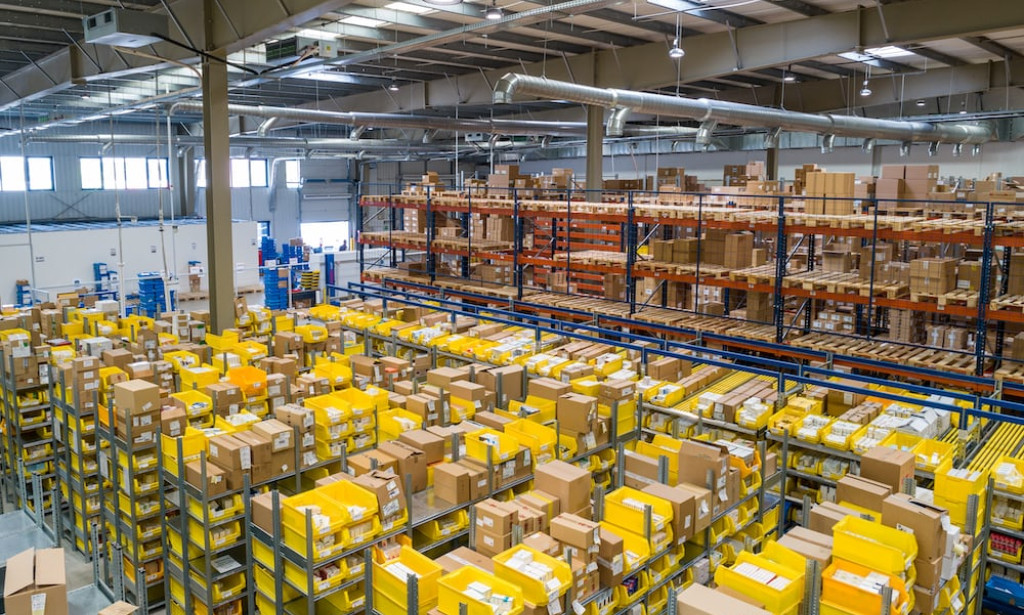WAREHOUSE MANAGEMENT RISK ASSESSMENT
The warehouse is a rented or leased place or premise where there is storage, distribution, and management of products while on the other hand warehouse management is the continuous and keen monitoring of the warehouse operations and activities.
The purpose of the risk assessment is to examine the various types of warehouse-associated risks and how to mitigate each of the risks.
Abstract
In a warehouse, there are several activities taking place including distribution, storage, and management of the products and for the effective and smooth running of the warehouse activities, there must be humans involved in the operation of the warehouse. The human involvement in the warehousing may be either employees or employers. The human beings in the warehouse and the warehouse as a whole need to be protected from the risks associated with the warehouse operations and due to this, we carried out a warehouse management risk assessment to find out the various potential health and safety hazards of the warehouse operations. The main purpose of this research is to develop recommendations on how to mitigate that risk by explaining specific methods, policies, procedures, or changes to be made within the warehouse to curb and minimize the risks.
Health and safety hazards in warehouse operations
Mechanical Power Transmission
Mechanical power transmission often adds as one of the warehouse management risks. It is hazardous in a manner that conveyor belts, powered or manually operated equipment becomes dangerous when a worker comes into contact or entangles with the machinery. To curb mechanical power transmission associated risks, the employees and employers should always wear PPE and avoid jewelry and lose clothing that may get caught. In addition, individuals handling or using the equipment should be well trained.
Fire extinguishers ( lack or unusable )
Due to the involvement of machinery in workplaces and warehouses, the machinery may cause fire when mishandled. Fire is the most common and dangerous warehouse safety risk and is almost preventable. For minimal loss of lives, injuries, and damage to the warehouse, regular inspections and fixing potential fire-associated risks are recommended.
Another important measure to prevent fire as a safety rule, any person entering into the warehouse should be thoroughly inspected before gaining access to the warehouse, and also the workers should be aware of the points at which the fire equipment like fire extinguishers are located for immediate response in case of fire breaks out.
Heavy equipment (forklifts )
Heavy equipment (forklifts) risks often occur due to familiarity with the equipment by the workers resulting in remiss attention which at times may make the workers end up forgetting safety procedures. According to O.S.H.A, an average of two workers lose their lives each month on the job as a result of being crushed. The deaths come as a result of workers being ignorant of handling the equipment accordingly. The major cause of fatalities in the warehouse is forklift accidents which are caused by unprofessional driving with an elevated load.
To minimize the risks of heavy equipment, there should be regular training of all workers working and coming into contact with the equipment. Despite training, workers should know how to avoid the operator’s blind spots hence saving lives.
Hazard communication on warehouse
Lack or unclear hazard communication on warehouse safety risks is also another important warehouse management risk. Failure of managers to offer training for their workplace, the employees and managers put themselves in danger. Operations in the warehouse should be handled with individuals having broad training including in-depth safety orientations, pointing out the risk. To mitigate this kind of risk, employees and managers should have additional training regularly on handling warehouse equipment maybe through the equipment’s operation manual and to keep written manuals and documentation for reference for the warehouse workers and managers.
Electrical risks
In most warehouses, electrical power is necessary for various operations and electrical connection in the warehouse entirely depends on the warehouse layout. And one of the commonly associated risks is the ground fault electrical shock. To mitigate this risk, the warehouse must adhere to OSHA standards, workers should avoid contact with water when operating electrical equipment, and also appropriate grounding must be observed at all times.
When the above-listed measures are ignored, there might be problems in the warehouse. For example, the most common workplace injuries are falls and having wires strewn about only increases the chances of falling happening.
The warehouse management should also invest in training on all employees equipping the workers with relevant knowledge of proper use of tools, alerting workers on the possible hazards which often occur when working with electrical equipment, and also making them aware of the circuit breakers and electrical panela locations within the warehouse. Lastly, employees working with electrical appliances should receive CPR training in case of an emergency.
In conclusion, when analyzing the level of risks in the warehouse, the findings can be said to agree.
Generalizing the safety risks, the managers and employees are highly advised to invest in training on the warehouse workers to minimize injuries, loss of lives of workers, and regulate damage to the warehouse.
References
OSHA 3220-10N 2004
The internet
Brown, M.E ., Chong, Y., 2000. Managing Project Risk. London: Person Education Limited.

You must be logged in to post a comment.